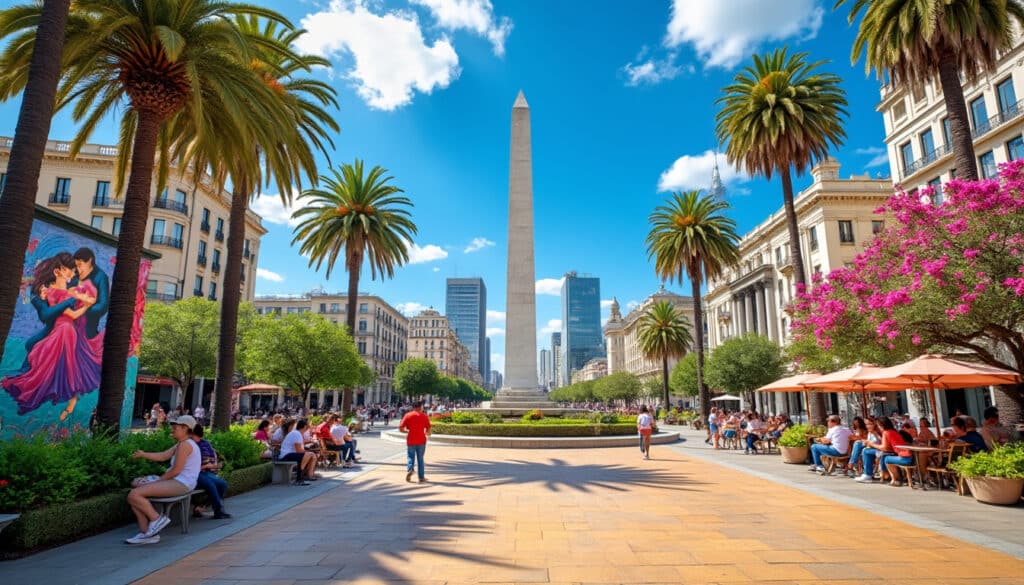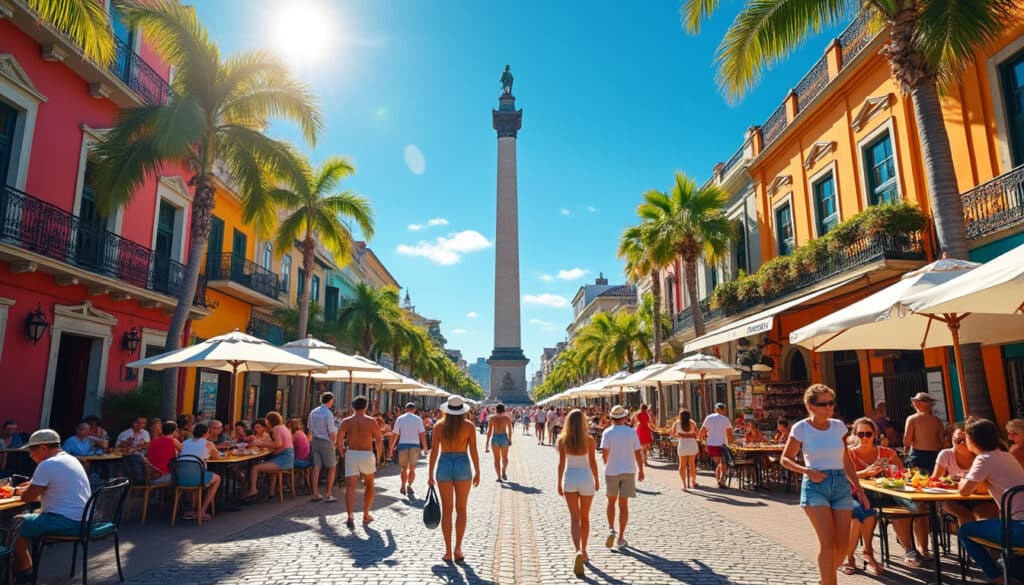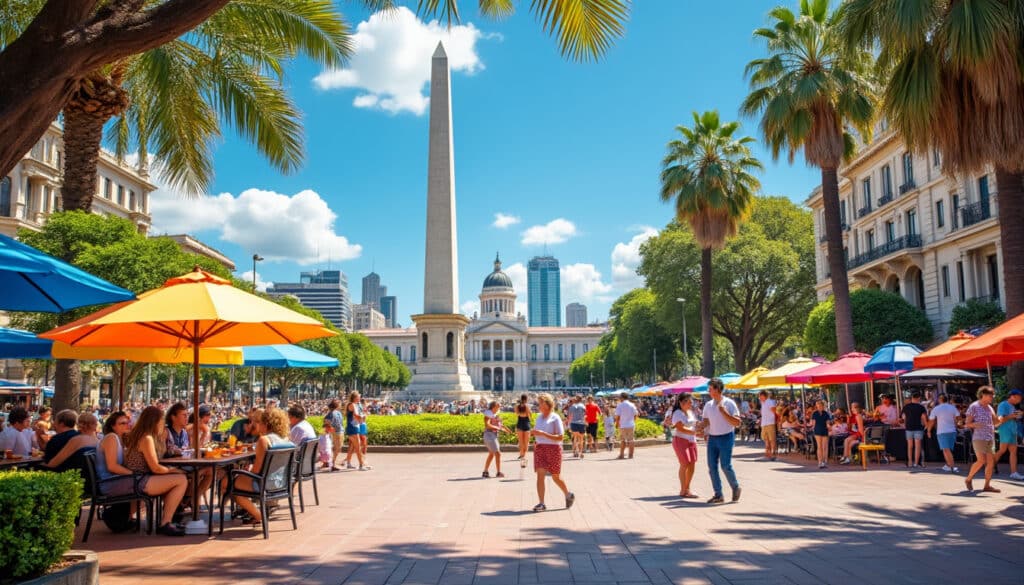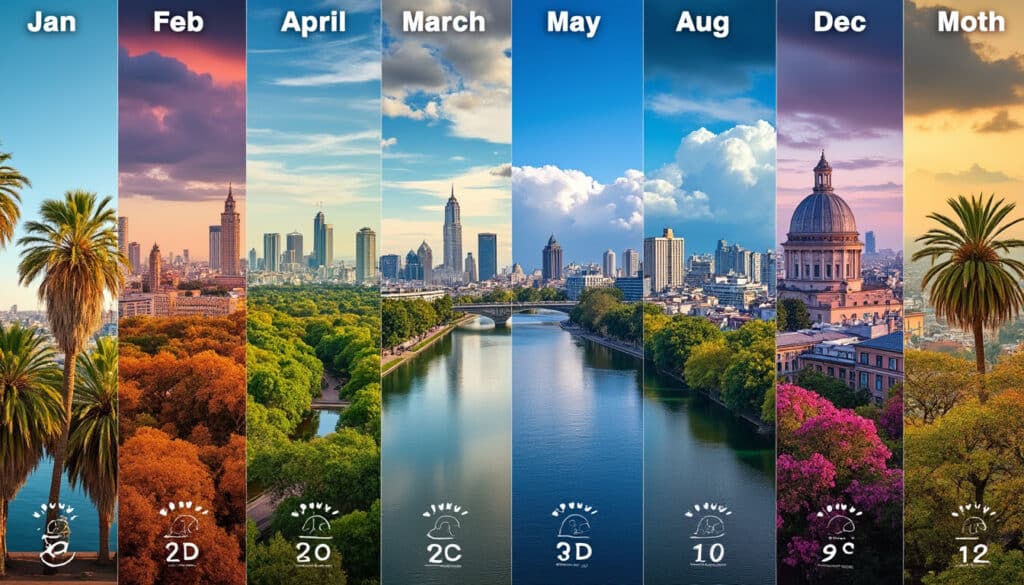Buenos Aires, a city known for its vibrant culture and bustling streets, faces significant challenges from natural risks, particularly flooding. As climate patterns shift and urban areas expand, the frequency and intensity of these occurrences have escalated, affecting both the day-to-day living and the long-term planning of the city. Residents and authorities alike grapple with these changes as they work to ensure safety, sustainability, and resilience.
Understanding the Flooding Dynamics in Buenos Aires
Buenos Aires, located on the Rio de la Plata estuary, is inherently vulnerable to flooding due to its geographical position. The city’s low elevation and proximity to water bodies mean that heavy rains and river overflows can quickly lead to waterlogging. One critical factor exacerbating this situation is the urban infrastructure which struggles to accommodate the increasing volume of water.
The city’s drainage system, developed over a century ago, was not designed to manage the current levels of precipitation, influenced by climate change. Buenos Aires often experiences flash floods, especially during the rainy season from November to March. These floods are not only disruptive but can also pose significant health risks due to contamination from sewage and industrial pollutants.
Several initiatives have been launched to address these concerns, aiming to enhance the city’s resilience. For instance, projects like the AquaBarrier and SafeDrain focus on modernizing the drainage systems and reducing flood risks. Additionally, innovative solutions such as the use of permeable surfaces and green roofs have been implemented to absorb rainfall, helping to mitigate the intensity of flood events.

Challenges of Urban Planning and Climate Adaptation
Urban planning plays a significant role in how cities respond to natural calamities like flooding. Buenos Aires faces the dual challenge of adapting to climate change impacts while managing its rapid urbanization. Poorly planned urban expansion has often occurred in flood-prone areas, with insufficient infrastructure to cope with extreme weather. The pressure to accommodate an ever-growing population has sometimes led to the neglect of environmental and risk assessments in urban development projects.
Moreover, marginalized communities living in informal settlements such as Villa Inflamable are particularly vulnerable. These areas typically lack the proper infrastructure to manage flooding effectively, leaving residents exposed to the dangers of contaminated water and health hazards. Solutions like UrbanResilience projects and EcoFlood Solutions aim to target these communities by upgrading their infrastructure and providing sustainable housing solutions.
Innovative Flood Mitigation Strategies
In response to the persistent flooding issues, the city has adopted various innovative strategies to enhance flood mitigation. The integration of nature-based solutions, such as the creation of urban wetlands and the restoration of natural waterways, plays a pivotal role. This approach not only helps manage excess rainwater but also enhances biodiversity and recreational opportunities within the city.
The implementation of technology-driven solutions such as FloodGuard and WaterSafe systems has revolutionized disaster preparedness and response. By using smart sensors and real-time data analytics, these systems provide advanced warning and effectively manage stormwater during heavy rainfall events. Furthermore, the introduction of community-based initiatives has empowered residents to participate actively in flood prevention and response efforts.
| Strategy | Description | Impact |
|---|---|---|
| Urban Wetlands | Restoration of natural water catchment areas | Reduces flood risk and enhances biodiversity 🌿 |
| Smart Sensors | Real-time monitoring of water levels | Provides advanced warning systems 📡 |
| Community Initiatives | Engagement in flood response activities | Increases local resilience 👥 |
Role of Policy and Governance in Flood Management
The role of governmental policy and governance is critical in shaping flood management strategies in Buenos Aires. Strong legal frameworks and coherent policies can significantly influence the effectiveness of flood response and mitigation measures. The government’s commitment to investing in infrastructure improvements and climate adaptation projects underlines the importance of policy in managing natural risks.
Policies focusing on comprehensive planning and zoning regulations are essential to steer development away from high-risk areas. Authorities are also encouraged to enforce stringent building codes and promote the implementation of flood-resistant technologies such as HydroControl systems in new constructions. It’s crucial for governmental bodies to work in collaboration with local communities and international organizations to ensure a holistic approach to flood management.
Lessons from Past Flood Events
The history of flooding in Buenos Aires offers valuable lessons in understanding and managing future risks. Notable flood events have often resulted in immense economic and social costs, highlighting the need for robust disaster management frameworks. Reflecting on past incidents, it’s evident that timely response, efficient resource allocation, and public awareness are key components of effective flood management.
Post-flood analysis reveals the importance of community resilience and preparedness. In many cases, the lack of access to information and resources hindered effective response efforts. Therefore, initiatives like RainShield programs focus on educating communities on flood preparedness and response strategies. Emphasizing the role of public awareness campaigns and educational workshops can substantially improve community readiness during flood events.
Community Resilience and Public Awareness
Building resilience at the community level is paramount in reducing flood-related risks. Empowering local residents through capacity-building programs and awareness campaigns can significantly enhance their ability to cope with and recover from flood events. Efforts such as FloodDefender and StormShield training sessions equip communities with the knowledge and skills needed for efficient disaster response.
Furthermore, public awareness initiatives play a crucial role in fostering a culture of preparedness. By providing accessible information and resources, these programs encourage proactive measures, enabling residents to protect their properties and ensure their safety during floods. The active participation of community members in such initiatives not only builds resilience but also strengthens social cohesion and collective action.
Frequently Asked Questions
- 🌧️ What are the main causes of flooding in Buenos Aires?
The primary causes include heavy rainfall, river overflows, and inadequate urban drainage systems. - 🏢 How does urbanization affect flood risks?
Urbanization often leads to increased impermeable surfaces, reducing the land’s natural ability to absorb water, thus heightening flood risks. - 🛠️ What measures are being taken to prevent flooding?
Measures include upgrading drainage infrastructure, implementing nature-based solutions, and enhancing community awareness and preparedness. - 📈 How can residents protect themselves during floods?
Residents can protect themselves by staying informed through reliable sources, having emergency supplies ready, and following evacuation protocols if necessary. - 🌿 What role does climate change play in Buenos Aires’ flood risks?
Climate change contributes to unpredictable weather patterns, including increased rainfall intensity, which exacerbates flooding issues.

Climate & Weather in Buenos Aires
The mesmerizing city of Buenos Aires, where the tango rhythms and historic architecture intertwine, offers a climate as multifaceted as its vibrant culture. As Argentina’s bustling capital, it entices travelers year-round with a warm, humid subtropical climate. Visitors wander through…

When thinking about Buenos Aires, images of vibrant tango, bustling streets, and warm climates might come to mind. However, the story of Buenos Aires includes the lesser-known cold weather that grips this fascinating city during the winter months. This unique…

The vibrant city of Buenos Aires is not only famous for its tango beats and cultural richness but also for its unique weather patterns that shape the life of its residents and captivate the imagination of visitors. As we step…

The enchanting city of Buenos Aires boasts a distinctive climate, marked by high humidity levels and a humid subtropical atmosphere. As the hub of Argentine culture, this vibrant metropolis is not only known for its passionate tango, historic architecture, and…

Is Buenos Aires warm throughout the year?
Buenos Aires, the bustling capital of Argentina, with its lively tango rhythms and vibrant culture, poses a climate allure just as engaging as its colorful streets. As one of South America’s popular tourist destinations, understanding the city’s weather patterns remains…

Rain and precipitation in Buenos Aires
Buenos Aires, a bustling metropolis known for its vibrant culture, tango music, and exquisite cuisine, experiences a complex and diverse climate that might surprise both residents and tourists. This city, located on the southeastern coast of South America, is graced…

Buenos Aires, the vibrant capital of Argentina, offers a dynamic climate that enriches both the lives of its residents and the experience of its many visitors. Throughout the year, the city experiences a range of weather patterns that mirror the…

Buenos Aires, the vibrant heart of Argentina, is a city where the rhythm of tango dances in harmony with the ebb and flow of its varied climate. The city’s temperatures are a fascinating dance between the warmth of summer sun…

Weather in Buenos Aires by month
Buenos Aires, with its rich tango culture and vibrant city life, offers a distinct climate experience throughout the year. The city’s weather varies significantly between the warm, humid summers and the mild, fog-kissed winters. Understanding Buenos Aires’ weather patterns can…

What is the weather like in Buenos Aires?
Buenos Aires, known for its vibrant culture and lively atmosphere, boasts a weather pattern that is as varied as the tango rhythms that echo through its streets. Travelers arriving in the city are often greeted by a climate that is…



